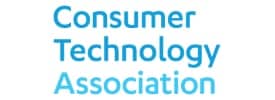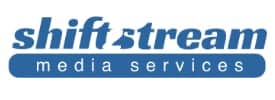- About
- Members
- Sponsors
- Subcommittees
- About Our Subcommittees
- Technology Group 3
- Implementation Team 1 – Advanced Emergency Information
- Implementation Team 2 – India
- Implementation Team 3 – ATSC 3.0 Conformance
- Implementation Team 4 – Brazil
- Implementation Team 5 – Tower Network
- Implementation Team 7 – Caribbean
- Implementation Team 8 – Automotive
- Planning Team 4 – Future Broadcast Ecosystem Technologies
- Planning Team 5 – Automotive Applications
- Planning Team 6 – Global Recognition of ATSC 3.0
- Planning Team 9 – Sustainability
- Technical Documents
- News
- Events
- Spotlight ATSC 3.0
- Contact Us
- Member Login
- Member Meetings
- Advanced Search
Search Site
Member Links
- About
- Members
- Sponsors
- Subcommittees
- About Our Subcommittees
- Technology Group 3
- Implementation Team 1 – Advanced Emergency Information
- Implementation Team 2 – India
- Implementation Team 3 – ATSC 3.0 Conformance
- Implementation Team 4 – Brazil
- Implementation Team 5 – Tower Network
- Implementation Team 7 – Caribbean
- Implementation Team 8 – Automotive
- Planning Team 4 – Future Broadcast Ecosystem Technologies
- Planning Team 5 – Automotive Applications
- Planning Team 6 – Global Recognition of ATSC 3.0
- Planning Team 9 – Sustainability
- Technical Documents
- News
- Events
- Spotlight ATSC 3.0
- Contact Us
- Member Login
- Member Meetings
- Advanced Search
Someone You Should Know
Posted on August 6, 2014 in ATSC News
Ira Goldstone, Univision Television Group
Ira Goldstone, a key member of the engineering leadership team at Univision, has been a significant player in the television industry for the past 44 years, bringing significant experience and expertise to the ATSC Board of Directors.
Beginning in Boston back in the late 1960s as a Summer relief tech at then-WHDH TV, he moved to WCVB TV, rising through the ranks from broadcast maintenance engineer to senior engineering management until 1981. After WCVB, Goldstone became vice president of engineering of Standard Communications, based in Salt Lake City, overseeing technology for KUTV and the Kansas State Network. In 1983, Goldstone moved to Los Angeles to become Director of Engineering for KTLA. A decade later, he was promoted to engineering VP for the Tribune Broadcasting stations group, and in 2008 he transitioned to Univision Stations Group’s engineering team.
“Throughout my career I’ve focused on developing strong engineering teams with a vision towards developing new technology solutions supporting the daily requirements and workflows of the of the company,” Goldstone says. “The primary focus of these solutions is aimed towards evolving the technology platforms and facilities to run more cost efficiently while simultaneously enhancing the on air look and capabilities of local news, promotional and entertainment content produced and delivered.
Goldstone notes that he participates in the ATSC, as well as other industry organizations, “to help Univision understand and evaluate the direction technology is moving, and understand the various perspectives on these issues. I help Univision understand the issues, and potential implications, in order for the company to develop an overall approach to and strategy, or, at the very least, understand what’s going on.”
ATSC 3.0 opens up new opportunities for member involvement, according to Goldstone. “The ATSC’s mission to develop a standard that is extensible to support emerging technologies such as 4K, hyper local triggered spot insertion, enhanced metadata delivery, higher efficiency CODECs, and more — all rely on the visionary participants completing the work on a standard that will meet the needs of our industry decades into the future.
“There’s great benefit to be gained by representatives of member organizations showing up to contribute to the cross industry collaboration among the highly dedicated members of the committees. I have learned not to assume anything about what exists, what is possible, and what business models may be out there creating new opportunities for all participants across ATSC.”
Beyond ATSC-specific initiatives, Goldstone closely follows the work of AMWA and NABA on the Joint Task Force on File Formats and Media Interoperability (JTFFFMI). “This initiative is key to ensuring seamless file exchange among multiple content providers nationally and internationally,” said Goldstone. He is also very interested in the work of SMPTE and the development of their 2022 standard, as the industry transitions to IP based transport of audio and video essence.
Goldstone also is an active board member of NABA, and is also a member of the NAB Engineering Committee representing Univision Communications. He is a Fellow of SMPTE and a member of SBE and STE. Additionally, Goldstone serves on the President’s Advisory board for the development of the Emerson College West Coast Campus.
All this leaves little time for personal interests. “I’ve been fortunate to have spent the past 50 years playing with and working in the field of emerging communication technology, which also happens to be my primary hobby,” Goldstone said when asked about his limited spare time. “I also enjoy walking the beach with my Golden Retrievers, hiking, travel, photography, discovering new places participating in the expansion of my alma matter, Emerson College, and just hanging out with friends. Thus far, that is all I have found time for!”
Posted in ATSC News
News Categories
News Archives
Subscribe
Subscribe to The Standard, our monthly newsletter. Learn More
Join ATSC
ATSC is a membership organization with both voting and observer categories. Voting members include corporations, nonprofit organizations, and government entities, and they participate actively in the work of ATSC. Observers are individuals or entities not eligible to be a voting member.
Subscribe to our Newsletter
Subscribe to The Standard, our monthly newsletter, to stay up-to-date with ATSC news and events around the world.
Site Links
Contact Us
Advanced Television Systems Committee, Inc.
1300 I Street NW, Suite 400E
Washington, DC 20005
Do you have questions about ATSC?
About ATSC
The Advanced Television Systems Committee, Inc., is an international, non-profit organization developing voluntary standards and recommended practices for digital terrestrial broadcasting. ATSC member organizations represent the broadcast, broadcast equipment, motion picture, consumer electronics, computer, cable, satellite, and semiconductor industries. ATSC also develops digital terrestrial broadcasting implementation strategies and supports educational activities on ATSC standards.
© 2024 ATSC





































